Search Results
Fine Jewelry University Articles matching: “offset channel twist”
Showing only FJU Article results. Click here to show all results.
Fine Jewelry University (Show All FJU Articles)
-
Synthetic Gems: The Whole Story
… way to have these gems. It took over a hundred years and millions of dollars of research to create what nature can produce. Man made gems come in many forms. Every thing from simple glass to plastic to high tech chemical tongue twister like gadolinium gallium garnet (also called GGG) and the modern diamond simulant Moissanite, a man made silicon carbide. In gemology, any material used to look like a gem is called a simulant. So clear glass, rock quartz, GGG, and …
-
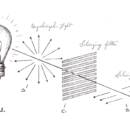
The Magic of Polarized Light
…doubly refractive a particular gem is. By far the most common use of polarized light in gemology is to help identify doubly refractive stones. When using a refractometer, a circular polarizing filter is fitted over the magnifier. When twisted, if the stone is doubly refractive, the refractive index line will jump from one number to the next. Once you know if a stone is doubly refractive or not you can use that information to narrow down the list of possible candidates of…
-
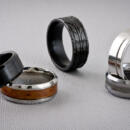
Alternative Metals for Men’s Jewelry
… fiber rings are scratch-resistant and hypoallergenic. It is perfect for those who are allergic to any metal. This is because carbon fiber is not a metal at all but a combination of several thin fibers that are bounded together and twisted together. This is then woven into fabric. The density of carbon fibers is low thus making it suitable for making lightweight materials. Carbon fiber is relatively easy to maintain. You can clean it by washing with water or non-abrasive…
-
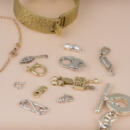
Types of Jewelry Clasps
… hands to fasten, and it can be hard to line up the threads correctly. If the clasp is cross-threaded, that longevity we talked about before goes out the window. Compatibility – Using a barrel clasp requires the cord or chain to be twisted. This can make them unsuitable for some chain styles. Push Release Clasp (Push Button Clasp) This style is somewhat similar to the box clasp. There is a notched post on one end of the clasp which fits into a catch on the other end. A …
-
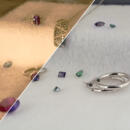
Gem in the Spotlight: Alexandrite
…. Alexandrite is one of June’s birthstones (along with moonstone and pearl) making it a great gift for that special someone with a birthday in June. Alexandrite is perfect for someone who wants the best of the best with a rare twist. One final note: while alexandrite in its natural form is expensive, its lab-created counterpart is very affordable. So no matter the occasion or budget, our gemologists will be able to find the right stone for you. Contact us today to get …
-
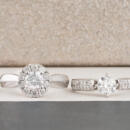
Anatomy of a Ring
…, the more likely you are to lose a stone. In addition to prong heads, you can also find bezel, half-bezel, and channel heads. A bezel head encircles the entire stone in metal and is possibly the most secure way to set a stone. Some people … pieces of metal that wrap approximately a quarter of the way around the stone on opposite sides of it. Finally, a channel head sets the stone in between two straight pieces of metal on either side of it (this style is most commonly seen …
-
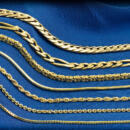
Types of Necklace Chains
…other chain types. Herringbone Chain The classic herringbone chain is made with short links that are connected in an offset V pattern. These chains are wide and flat with a very thin profile. This flat design gives herringbone chains a much… and inflexible in spots. Wearability – Box chains have an unfortunately tendency to pull hair. They can also become twisted which detracts from their clean, straight look. Rope Chain Few other chain styles are as famous and well known and…